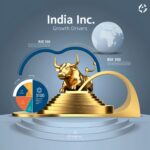- The arithmetic of active management states that before costs, the return on the average actively managed dollar will equal the return on the average passively managed dollar. After costs, the return on the average actively managed dollar will be less than the return on the average passively managed dollar.
- A market must be selected, and each investor who holds securities from the market must be classified as either active or passive.
- A passive investor always holds every security from the market, with each represented in the same manner as in the market. An active investor is one who is not passive and whose portfolio will differ from that of the passive managers at some or all times.
- Over any specified time period, the market return will be a weighted average of the returns on the securities within the market, using beginning market values as weights. Each passive manager will obtain precisely the market return, before costs.
- Because active managers bear greater costs, the after-cost return from active management must be lower than that from passive management.
- Sensible investment professionals continue to make statements that seemingly fly in the face of the simple and obvious relations due to three reasons:
a. Passive managers in question may not be truly passive.
b. Active managers may not fully represent the non-passive component of the market in question.
c. Summary statistics for active managers may not truly represent the performance of the average actively managed dollar. - Properly measured, the average actively managed dollar must underperform the average passively managed dollar, net of costs.
- Empirical analyses that appear to refute this principle are guilty of improper measurement.
- It is possible for some active managers to beat their passive brethren, even after costs, but they must manage a minority share of the actively managed dollars within the market in question.
- The best way to measure a manager’s performance is to compare his or her return with that of a comparable passive alternative, often termed a “benchmark” or “normal portfolio.”
Source: Arithmetic of Active Management” by William F. Sharpe











